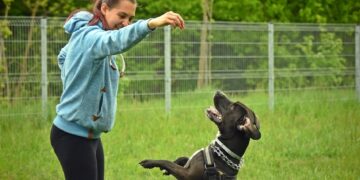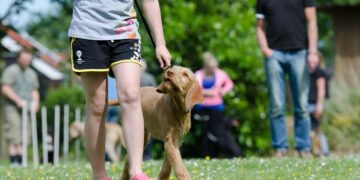Top Tips for Successful Dog Behavior Training: A Comprehensive Guide
If you’re planning to train your dog or struggling with an unruly pup, you’ve come to the right place. This comprehensive guide provides actionable insights and practical tips to enhance your dog training experience. Whether you’re a first-time dog owner or a seasoned pet parent, these strategies will empower you to foster a healthy, happy, and well-behaved canine companion.
Understanding Dog Behavior
Effective training begins with understanding your dog’s behavior. Dogs have their way of communicating and learning, influenced by their genetic makeup, environment, and experiences.
The Importance of Socialization
Early socialization helps dogs learn how to interact appropriately with other animals and people. Introduce your puppy to new environments, sounds, and experiences to develop a well-rounded temperament.
Recognizing Stress Signals
Dogs display certain behaviors when stressed, such as yawning, licking their lips, or avoiding eye contact. Recognizing these signs early can prevent problematic behaviors from developing.
Essential Training Principles
Embark on your training journey by embracing key principles that underpin successful dog training routines.
Consistency is Key
To foster learning and retention, apply consistent rules and cues during training sessions. Consistency in commands and your reaction to behaviors makes it easier for your dog to understand what is expected.
Positive Reinforcement Thrives
Rewarding your dog for good behavior with treats, praise, or play makes learning enjoyable and memorable. Positive reinforcement not only strengthens good behavior but also builds a stronger bond between you and your pet.
Training Techniques That Work
Different dogs may require different training approaches. Here’s how you can tailor your training to your dog’s unique personality and needs.
Clicker Training
A popular method involving a small device that makes a ‘click’ sound, clicker training is an effective way to mark the exact moment your dog does what you want. Follow the click with a treat, and you’ll find this to be a powerful tool for shaping your dog’s behavior.
Crate Training
When done correctly, crate training is a great way to make your dog feel safe and manage their anxiety. Ensure the crate is always a ‘happy place,’ and never use it as a punishment.
Common Questions Answered
Every dog owner has questions. Let’s address some common ones to give you more clarity.
How long does it take to train a dog?
Training duration varies depending on the dog’s age, temperament, and the consistency of the training. Basic training like sit, stay, and come can often be taught within a few weeks, while more complex behaviors may take longer.
What age should you start training a dog?
Training should start as early as possible. While younger dogs might have a shorter attention span, they also learn faster. Even older dogs can learn new tricks, so it’s never too late to start training.
Real-Life Success Stories
Let’s take inspiration from real-life examples where effective training techniques have transformed troublesome behaviors into great pet etiquettes.
Max’s Transformation
Max, a Labrador retriever, was notorious for destructive chewing. His owners started using positive reinforcement by rewarding him with a chew toy every time he chose it over household items. Gradually, Max’s behavior changed, showing how understanding and patience can lead to great results.
Bella Goes Clicker
Bella, a shy beagle, was trained using clicker training to help her gain confidence. Each successful interaction with strangers was followed by a click and a treat. Over time, Bella became more outgoing and friendly.
Making Training a Rewarding Experience
To truly succeed in training your dog, ensure the process is rewarding for both you and your furry friend. Always approach training sessions with patience and a positive attitude, as your emotions influence your dog’s ability to learn.
Understand Your Dog’s Limits
Training can be frustrating at times. Recognize when your dog is tired or overwhelmed, and give them sufficient breaks to prevent burnout.
Keep Training Sessions Short and Sweet
Dogs have short attention spans. Keep training sessions brief (5-10 minutes for puppies, and up to 15 minutes for older dogs) to maintain interest and effectiveness.
Following these tips, you’ll not only achieve better behavior from your dog but also enjoy a richer, more connected relationship. Remember, every dog is unique, and finding what best works for your pet could be the most rewarding part of your journey together!














































